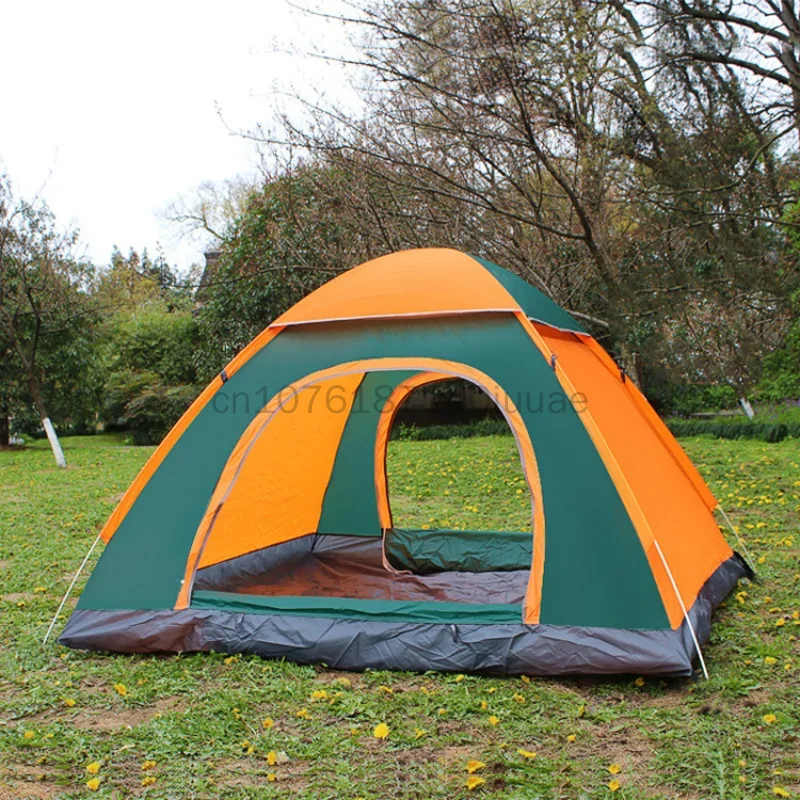

Camping is one of the most rewarding ways to experience the great outdoors. Whether you’re
hiking through the mountains, enjoying a peaceful weekend by the lake, or embarking on an
extended backcountry adventure, choosing the right gear is essential to ensuring a successful
and comfortable trip. One of the most important pieces of equipment for any camping excursion
is your tent.
The perfect tent can make or break your experience, as it serves as your shelter, storage, and,
at times, your sanctuary from the elements. With so many types, styles, and features available,
it can be a bit overwhelming to figure out which tent is the best fit for your needs. In this guide,
we’ll walk you through how to select the best tent for your camping trip and highlight other
essential camping gear you’ll need to complete your adventure.
Choosing the Right Tent for Your Camping Trip
When selecting a tent, there are several factors to consider, such as the type of camping you
plan to do, the size of your group, and the conditions you may encounter. Here’s a breakdown
of the key features to keep in mind:
1. Tent Capacity: How Many People Will Be Camping?
The first consideration when choosing a tent is the size, or the number of people it will
accommodate. Tent manufacturers generally label tents with a number, such as “2-person,” “4-
person,” or “6-person.” This number refers to how many people can sleep in the tent, assuming
each person has their own sleeping bag and a little room to stretch.
However, it’s important to note that these numbers can sometimes be a little tight. If you prefer
extra room for gear, or if you want to ensure comfort during your stay, consider selecting a tent
that’s rated for one or two people more than your group size. For example, a 4-person tent may
comfortably fit three people with extra space for your gear, while a 2-person tent might feel
cramped if you’re traveling with gear or pets.
2. Tent Seasonality: When Will You Be Camping?
Tents come in a variety of season ratings to help you choose the right shelter for the conditions
● 3-season tents: These are the most common type of tent for general camping, offering
a balance of breathability, durability, and protection from the elements. Designed to
withstand mild spring, summer, and fall conditions, they can handle moderate rain and
light snow. If you’re camping in temperate climates or during the warmer months, a 3-
season tent is usually your best option.
● 4-season tents: As the name suggests, these tents are designed to handle all four
seasons, including harsher winter conditions. They are heavier and more durable, with
stronger poles and more robust materials that can resist wind, heavy snow, and cold
temperatures. If you’re planning on winter camping, mountaineering, or heading into
regions with unpredictable weather, a 4-season tent is the way to go.
● 2-season tents: These are typically lightweight tents meant for use in warm, dry
you’ll face. Here’s a look at the basic types of seasonality:
weather. While they’re not the best option for rain or wind, they can be perfect for a
summer camping trip when conditions are predictable and mild.
3. Tent Shape and Design: What’s Your Preferred Setup?
Tents come in a variety of shapes and designs, each offering different levels of stability, space,
and ease of setup. Some of the most popular designs include:
● Dome tents: These are among the most common and popular designs for recreational
camping. They feature a simple, freestanding structure with curved poles that form a
dome shape. They are easy to set up, offer good headroom, and generally perform well
in both rain and wind.
● Cabin tents: These tents have a more vertical wall structure, providing more interior
space and headroom. They’re ideal for families or larger groups who want a more
comfortable camping experience. Cabin tents often include extra features like windows,
porches, and multiple rooms.
● Tunnel tents: Offering a more elongated shape, tunnel tents are typically lightweight,
and they’re a good choice for long trips or backcountry camping where weight is a
concern. Though not as spacious as cabin tents, they provide good stability and are
easy to pitch.
● Pop-up tents: These tents are incredibly easy to set up. You simply pull them out of the
bag, and they spring into shape! Pop-up tents are perfect for quick overnight trips or
festivals, but they may not provide the best weather resistance for extended camping in
rough conditions.
4. Tent Materials: Durability and Weather Resistance
The materials used in a tent’s construction play a crucial role in its durability, weight, and
weather resistance. When choosing a tent, be sure to check the following:
● Tent Fabric: Most tents are made from nylon or polyester, with nylon being lighter and
more durable but also more prone to UV damage over time. Polyester is heavier but
more resistant to UV degradation. Look for tents with waterproof coatings or a high
denier rating for added durability.
● Floor Fabric: The tent floor is often the first part of the tent to wear out, especially in
high-use areas. A thicker, more durable fabric like polyethylene or nylon with a
waterproof coating will help prevent leaks and damage.
● Tent Poles: Tent poles are usually made from either aluminum or fiberglass. Aluminum
poles are stronger, more durable, and lighter than fiberglass poles, but they can also be
more expensive. If you’re just starting out or planning on light camping, fiberglass poles
may be more than sufficient.
5. Ventilation: Stay Cool and Dry
Proper ventilation is crucial for preventing condensation buildup inside your tent, especially
during humid or wet conditions. Many tents feature mesh windows or vents to allow for airflow
while keeping bugs out. Look for tents with multiple entry points, vestibules for storing gear, and
mesh panels to improve ventilation.
Other Essential Camping Gear for Your Trip
Now that you’ve selected the perfect tent for your adventure, let’s take a look at some of the
other essential camping gear you’ll need to ensure a comfortable and successful trip:
1. Sleeping Bag and Sleeping Pad
A good night’s sleep is essential for a fun camping trip. A sleeping bag will provide warmth and
comfort, while a sleeping pad will offer insulation from the cold ground. Be sure to choose a
sleeping bag that’s rated for the temperatures you’re expecting, and pick a sleeping pad that
provides ample support and cushioning.
2. Cooking Gear
Cooking while camping can be one of the highlights of the trip. A portable stove, cookware, and
a lighter are all essentials for preparing meals in the great outdoors. Don’t forget to bring along
fuel for your stove and any utensils or plates you’ll need.
3. Headlamp or Flashlight
When night falls, you’ll need reliable lighting. A headlamp is a great hands-free option, and it’s
especially useful when you’re setting up camp or cooking after dark. Make sure you bring extra
batteries!
4. First Aid Kit
Accidents can happen, so it’s always a good idea to carry a basic first aid kit with you. Be sure
to include items like bandages, antiseptic, and any personal medications you may need.
5. Food and Water
Lastly, don’t forget to pack enough food and water for your trip. Hydration is key, so bring along
a portable water filter or purification tablets if you’re camping in an area without readily available
water.
Conclusion
Choosing the right tent is just the first step in preparing for a camping adventure, but it’s an
important one. By considering the type of camping you plan to do, the conditions you may
encounter, and the features that matter most to you, you’ll be able to select the best tent for
your needs. And with the other essential gear outlined in this guide, you’ll be well on your way to
a memorable and enjoyable camping experience.
Remember, camping is all about enjoying the outdoors, connecting with nature, and creating
lasting memories. Happy camping!
Latest Post


